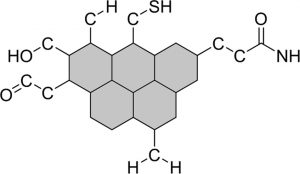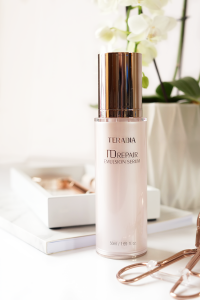Consider a diamond so small that it is measured in nanometers, but so powerful that it has the potential to change the way scientists approach cancer treatment and skincare.
Meet nanodiamonds, the tiny stones that are making waves in the fields of medicine and cosmetics worldwide.

Illustration of nanodiamonds source

Basic structure of nanodiamonds with surface functional groups source
Nanodiamonds are overturning traditional cancer treatment methods.
Chemotherapy treatments, while effective, can have serious side effects. According to scientists, nanodiamonds provide new hope because they can selectively induce apoptosis, or cell death, in target cancer cells while causing no harm to healthy cells.
This makes them a game changer in the fight against cancer.
But that isn’t all.
Oxidative stress results from an imbalance between the activity of oxygen-containing free radicals and antioxidants in the cells and tissues of your body, leading to increased oxidation reactions. If there are more free radicals than antioxidants, the former can cause damage to fatty tissue, DNA, and proteins due to the lack of sufficient neutralizing agents.
Because of their ability to reduce this phenomenon, nanodiamonds can efficiently treat cardiovascular disease and inflammation. This makes them a potential force in the development of new therapies for chronic diseases.

Teradia TD Repair Serum Emulsion (serum composed of nanodiamonds) source
Nanodiamonds are used in a variety of cosmetic products, ranging from skincare creams to hair products and makeup.
They can improve skin texture and appearance, as well as reduce the appearance of fine lines and wrinkles, and increase skin hydration and elasticity.
This makes them an essential component of any anti-aging skincare routine.
For those who suffer from acne, nanodiamonds have antimicrobial properties that make them a popular ingredient in acne-fighting skincare products. They can effectively kill the bacteria that cause acne, reducing inflammation and aiding in skin clearing.
Nanodiamonds are small, but they pack a powerful punch. While more research is needed to fully understand the therapeutic and cosmetic benefits of these tiny diamonds, it is clear that they have the potential to change medicine and beauty forever.
Prepare to shine with nanodiamonds!
~ Vivian Hou







